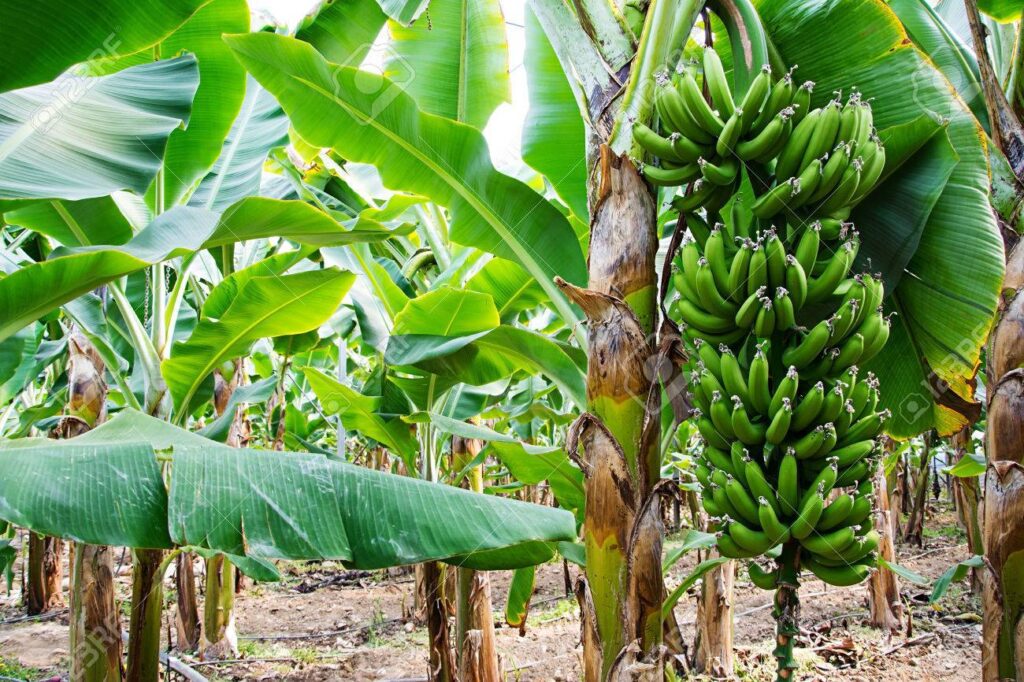Bananas Are Not Trees: Unveiling the Truth about Giant Herbs

Banana tree with a bunch of growing bananas, Alanya, Turkey
Introduction
Bananas, those delicious, yellow, and tropical fruits, have been a dietary staple for centuries. But did you know that bananas are not trees, as commonly believed? Surprisingly, they are classified as giant herbs. In this blog post, we’ll delve into the intriguing botanical world of bananas, exploring why they are not trees and uncovering the fascinating characteristics that make them giant herbs. Understanding the truth about bananas can add a whole new layer of appreciation for these beloved fruits.
Banana Basics
Before we dive into the botanical details, let’s start with some basics about bananas. Bananas are one of the most widely consumed fruits globally, known for their sweet taste and versatility in culinary applications. They are a rich source of essential nutrients like potassium, fiber, and vitamins, making them a healthy addition to your diet.
Bananas: Giant Herbs, Not Trees
-
Absence of a Woody Stem
The primary reason bananas are classified as giant herbs rather than trees is due to the absence of a woody stem or trunk. Trees typically have a trunk composed of wood, which increases in diameter as the tree grows. In contrast, the “trunk” of a banana plant is a pseudostem made up of tightly packed leaf bases.
- Herbaceous Growth
Banana plants exhibit herbaceous growth, which means they have soft, flexible stems that do not become hard and woody over time. This herbaceous nature is characteristic of plants like herbs and grasses. As a banana plant matures, new leaves emerge from the center, and the older leaves gradually wither and fall off.
- No Secondary Growth
Unlike trees that undergo secondary growth, where new layers of wood are added each year, banana plants do not have this feature. Secondary growth is responsible for the thickening of tree trunks over time, resulting in the formation of growth rings. Bananas lack this characteristic entirely.
- Limited Height
While banana plants can grow to impressive heights, they don’t reach the towering statures commonly associated with trees. Some banana species can reach heights of 20 to 30 feet, but they never match the towering heights of true trees.
The Anatomy of a Banana Plant
To better understand why bananas are considered giant herbs, let’s explore the anatomy of a banana plant:
- Pseudostem: As mentioned earlier, the “trunk” of a banana plant is not a true woody trunk but a pseudostem formed by tightly packed leaf bases. This pseudostem provides support for the plant and its fruit.
- Leaves: Banana plants have large, elongated leaves that emerge from the center of the pseudostem. These leaves play a crucial role in photosynthesis, capturing sunlight and converting it into energy for the plant.
- Inflorescence: The banana plant’s inflorescence, also known as the “banana heart,” is the central part of the plant from which the fruit develops. It consists of tightly packed rows of female flowers that give rise to the familiar banana clusters.
- Root System: Banana plants have a fibrous root system that anchors the plant and absorbs nutrients and water from the soil.
Cultivation and Harvesting
Understanding that bananas are giant herbs, not trees, can also shed light on their cultivation and harvesting practices. Unlike traditional trees, banana plants have a relatively short lifespan, typically producing fruit for a limited number of years. After fruiting, the plant is cut down, and a new shoot or sucker emerges to continue the cycle.
Conclusion
Bananas, with their unique characteristics and classification as giant herbs, are a testament to the fascinating diversity of the plant kingdom. They may not fit the traditional image of trees, but they play a vital role in global agriculture and nutrition. Next time you enjoy a delicious banana, you can appreciate not only its taste but also the intriguing botanical distinction that sets it apart from trees. Bananas may not have wood in them, but they certainly have a special place in our hearts and diets.
For More Related Articles Browse Our Website Blogster.pk
For social Connection You can also Visit and follow our Social media Platforms
Facebook , Instagram, Linkedin, Pinterest, Quora, Twitter, Youtube.







